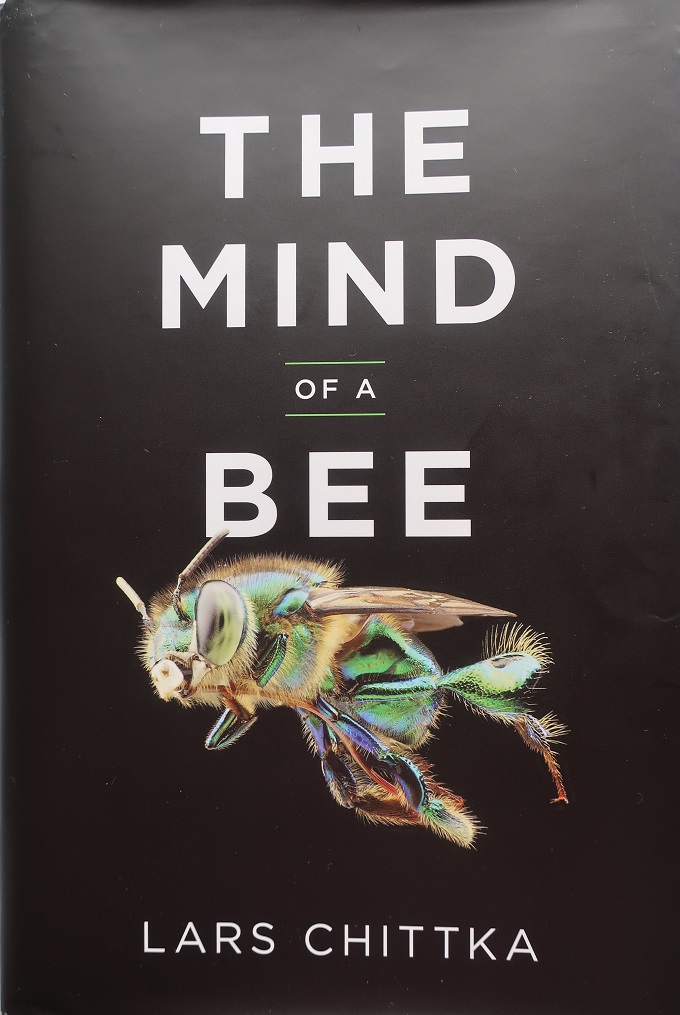
The Mind of a Bee, – by Lars Chittka
Published: 2022 by Princeton University Press
ISBN: 978-0-691-18047-2
ISBN (e-book) 978-0-691-23624-7
Hardback, 260 pages including introduction, afterword, acknowledgments, notes and bibliography, illustration credits, and index.
Cost: £25
Available from bookstores including Northern Bee Books.
The Mind of a Bee by Lars Chittka offers a fascinating tour of the highly complex brains and minds of bees. Chittka is professor of sensory and behavioural ecology at Queen Mary University of London. He writes in US English, and he begins 11 of the 12 chapters with a quote from a famous writer on bees. The text is illustrated with photographs, tables, and diagrams which are well executed but are, sadly, lacklustre in appearance on the page.
In every chapter, Chittka weaves together older and recent investigations. Thus, he charts the history of all the important discoveries made around bee intelligence that are the foundation to present day research and new knowledge. He shares details too about the lives of scientists, such as Karl von Frisch, who made discoveries about honey bee colour learning and dance-language communication at a difficult time in Nazi Germany. Although the book is mostly about the work that Chittka and his team have carried out, it is clear that they have relied heavily on the findings of other scientists to help them place the pieces of the complex jigsaw of bee cognition in the correct places. Chittka’s scientific work has been carried out mainly with bumble bees living in laboratory settings, but he has also conducted research with honey bees in the field.
There is an introduction to each chapter and a review at the end which is helpful for keeping track of each topic. This facilitates systematic note-taking. We learn that a bee’s brain has a million nerve cells compared with 86 billion in human brains, but that the bee nerve cells are complex, highly-branched structures resembling a mature oak tree and that each cell makes connections with 10,000 other nerve cells. A bee must learn and remember so much when she works as a forager: where to find good sources not already depleted, and how to skilfully work the flowers of different species to take full advantage of what is on offer.
Chittka dispels the myth that worker honey bees are cold blooded and explains why they like drinking warm nectar and how they can learn to associate the colour of flowers with nectar temperature and can predict nectar temperatures based on past experiences.
The anatomy and physiology of a worker bee’s brain and sensory systems are described in good detail. Likewise, for a bee’s learning process including information about acquisition and recall. The topic of pain is covered and we learn that, like us, insects have receptors that register tissue damage and pain but that alarm pheromones flood their nervous systems with built in painkillers making them perhaps unaware of injuries.
The big question around sentience and consciousness is addressed towards the end. The author tells us that “consciousness is a state of awareness that enables animals to live not just in the present but also to have access to the past and the future”. Chittka’s work shows that bees can imagine images of mental shapes and they demonstrate intelligent behaviour with evidence mounting for a simple form of consciousness.
This book will be useful for scientists and readers who are studying biology, animal behaviour, neurophysiology, and evolution. However, the lack of a glossary for the scientific lexicon, may make this book a challenging read for people without a scientific background. So, it is not an easy bedtime read, but it will reward beekeepers who read it closely and carefully.
Media Attention For Mind of a Bee.
Leafcutter Bee Update.
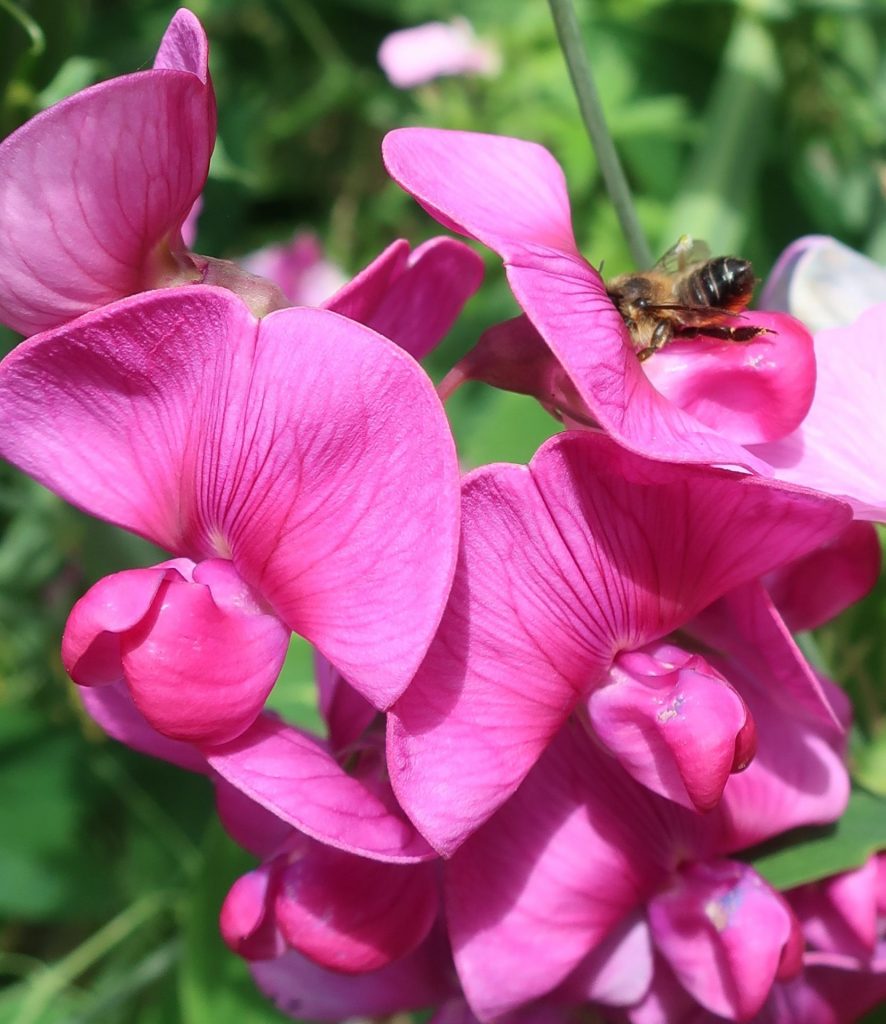
Little leafcutter bee has finished building a nest in the tubular trolley handle and is foraging on everlasting peas in the glorious hot sunshine we enjoyed for a few days.
Apiary News.
A few local lime trees have finished flowering already but some have yet to open up and secrete nectar so we may get a crop of lime honey this year, but the cooler weather makes this unlikely.
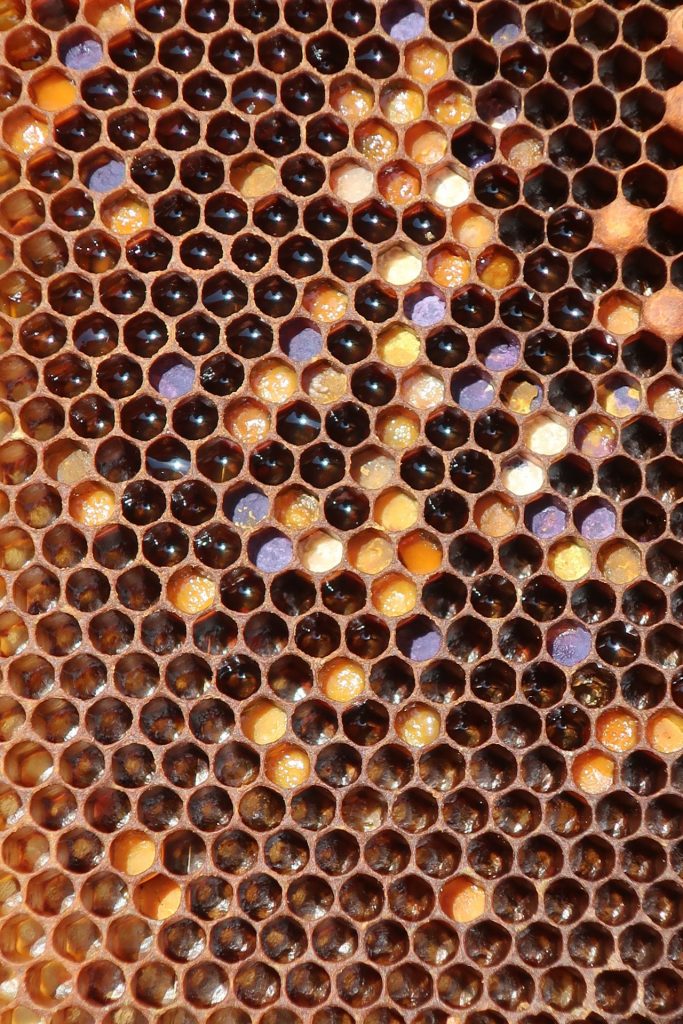
Blue pollen is uncommon and I’ve not noticed this colour before in the apiary. The photo doesn’t do its brilliant periwinkle-blue justice. Without the addition of saliva, and being tamped down in the cell, pollen looks different in a bee’s corbiculae.

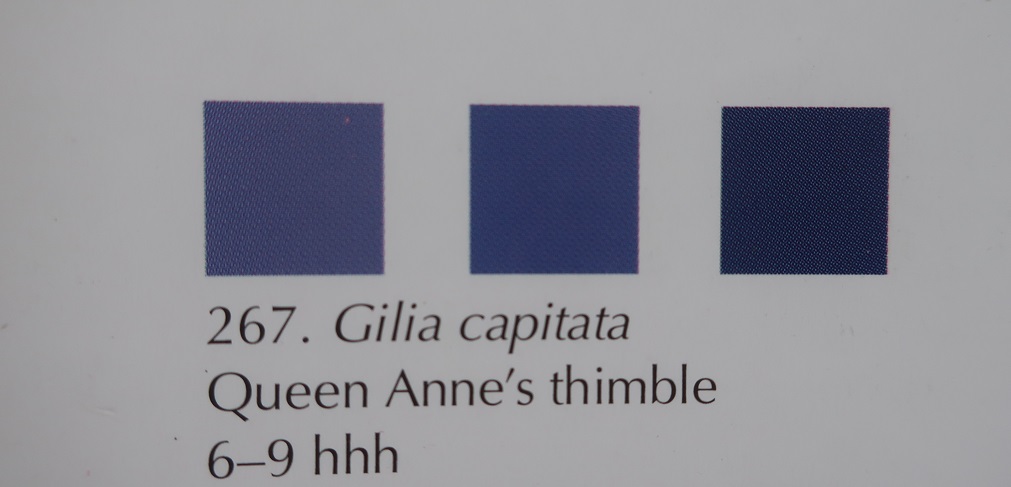
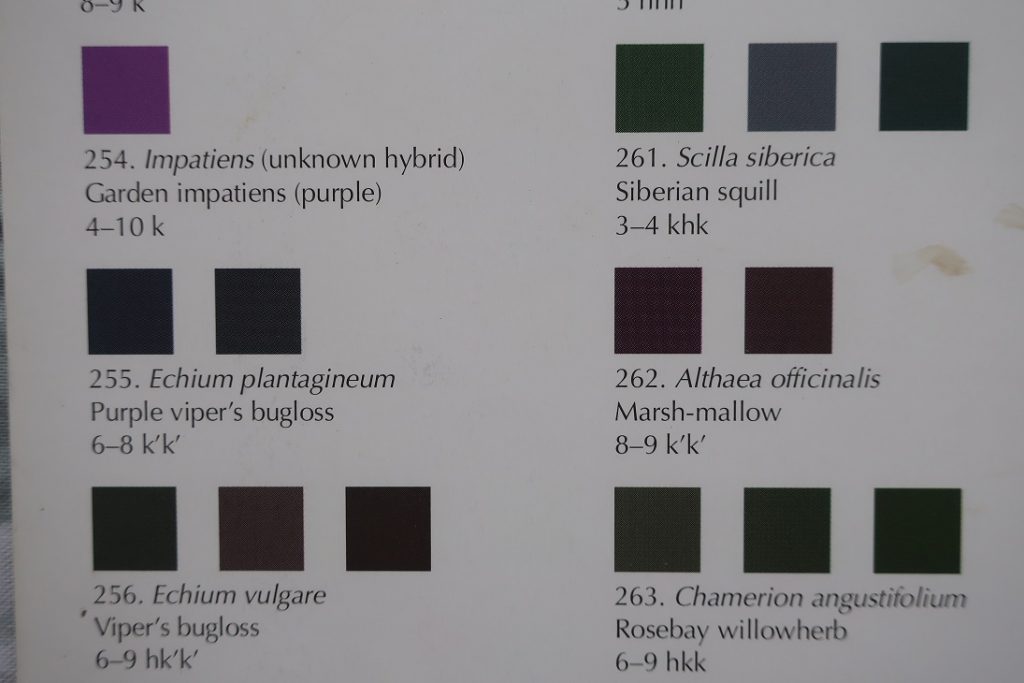
I’ve referred to William Kirk’s book in an endeavour to find out the source but I’m still not sure so I’m going to have to collect some pollen for microscopy analysis. It will help me to measure the size of a pollen grain and examine its surface to give me a clue. Our blue pollen looks like queen Anne’s thimble but I am not familiar with this plant though it may grow in a nearby garden. I’ve seen blue Phacelia tanacetifolia pollen before and it may be growing locally and producing this lovely pollen. We have no local crops of phacelia but it is one of top plants for potential honey yields, and the pollen contains some of the highest protein levels in plants so it’s very desirable for honey bees.
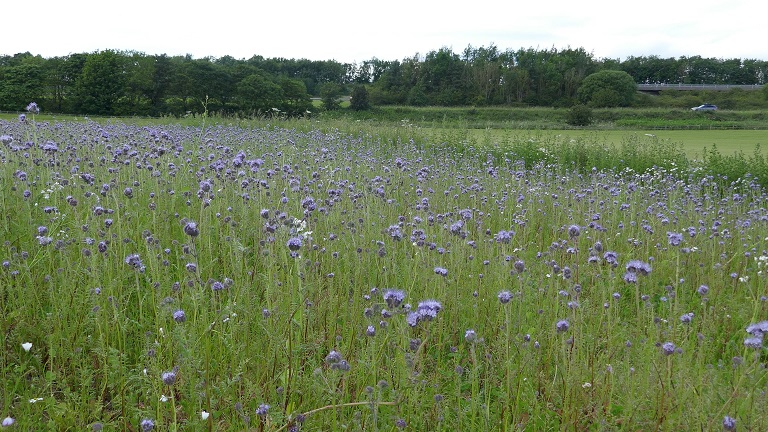
Microscopy Results.
Instead of cleaning the house this afternoon, I made a pollen slide and discovered that this pollen is indeed phacelia. The grains are small at 27 microns and they have lovely patterned surfaces from furrows and pores as you can see.
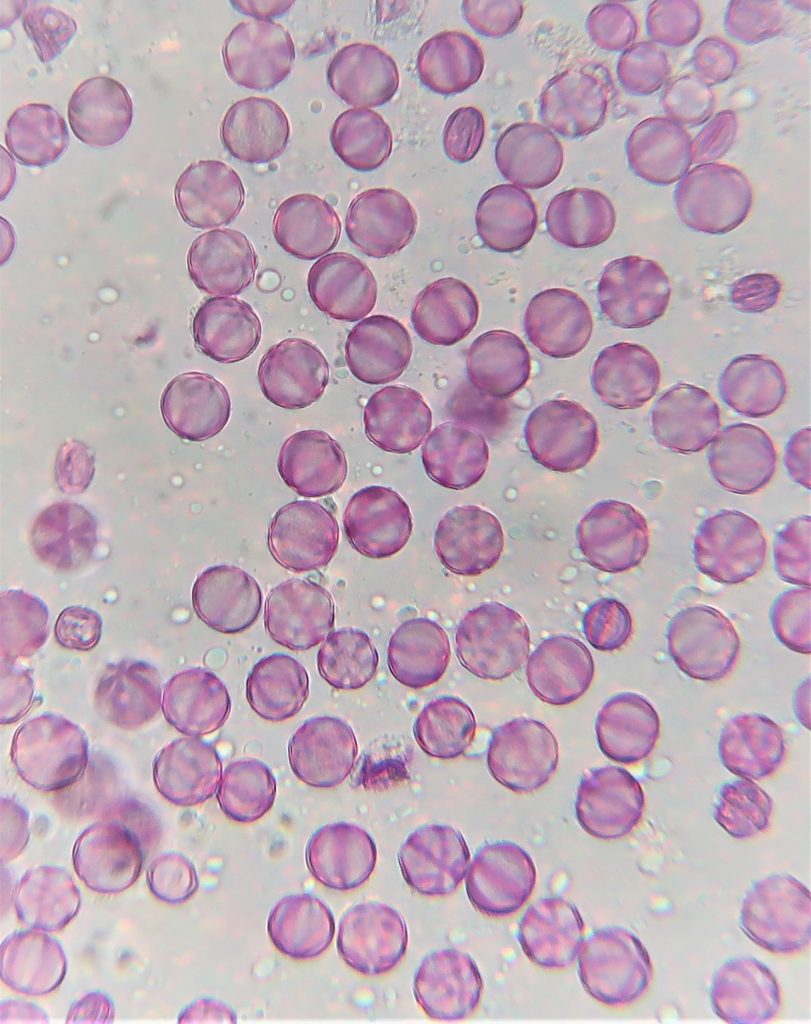

The thing I enjoyed most while reading Lars Chittka’s “Mind of a Bee”, was being guided to look at everything in the life of a colony, from a honey bee’s point of view. Adopting this way of thinking will surely improve the way we manage our apiaries.
I agree, Margaret. Thank you for sharing your thoughts.
Thanks Ann, … I wonder if the increase in concern for ‘saving the bees’ has lead to someone sowing Phacelia near you.
I have an aquaintance here in S. London who is a gardener and he is snowed under with people who want wild flower meadows in place of their lawns…
I sort of saw this coming a few years ago and decided to ramp up my beekeeping in anticipation!
Where can we get seed from?
Hello Debz, garden centres often have packets of “green manure” seeds that include phacelia.
Thanks Ann
Hello Frazer. Exactly that! A local farmer across the river 2 miles away has a field with phacelia and buckwheat. He has planted it as “green manure” and many farmers are doing this because the price of fertiliser has sky rocketed. It’s great what a little dectective work can reveal!
Thanks for the review of the Chittka book, it sounds interesting.
I think that you will enjoy it, Philip.